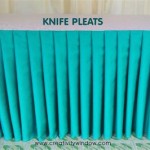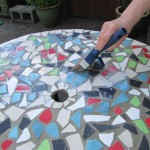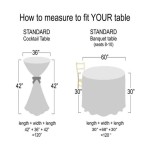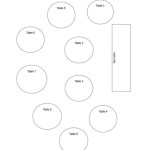How to Refinish a Dining Room Table
A dining room table often serves as the focal point of a home. Over time, daily use can leave tables scratched, stained, and generally worn. Refinishing a dining room table is a practical method to restore its original beauty, extend its lifespan, and refresh the overall aesthetic of a dining space. This article provides a comprehensive guide to refinishing a dining room table, detailing the necessary preparations, steps, and considerations for achieving a professional-quality result.
Before commencing the refinishing process, a thorough assessment of the table's condition is imperative. Examine the table's surface for scratches, dents, water rings, and any signs of structural damage. The extent of the damage will dictate the necessary repairs and the level of refinishing required. For minor scratches and blemishes, a light refinishing may suffice. However, extensive damage may necessitate stripping the table down to the bare wood for a complete overhaul.
Preparation and Material Gathering
Successful refinishing begins with meticulous preparation. This involves the gathering of necessary tools and materials, as well as the creation of a suitable work environment. The following list outlines the essential items required for the project:
Safety Gear: Safety glasses, a dust mask or respirator, and chemical-resistant gloves are vital for protecting oneself from dust, fumes, and potentially harmful chemicals.
Stripping Agent: Choose a chemical stripper appropriate for the existing finish on the table. Consider options such as liquid strippers, gel strippers, and eco-friendly alternatives. It's crucial to follow the manufacturer's instructions carefully regarding application, dwell time, and disposal.
Stripping Tools: A plastic scraper, putty knife, and various sizes of detail scrapers are needed for removing the old finish. Avoid using metal scrapers, as they can scratch the wood surface.
Sandpaper: A range of sandpaper grits is essential for smoothing the wood surface. Start with a coarser grit (e.g., 80-grit) for removing stubborn residue and imperfections, and gradually progress to finer grits (e.g., 120-grit, 180-grit, 220-grit) for achieving a smooth finish.
Sanding Block or Orbital Sander: A sanding block provides control for manual sanding, while an orbital sander expedites the process, especially for larger surfaces. Use appropriate sandpaper for the chosen sanding method.
Tack Cloth: Tack cloths are used to remove dust particles from the wood surface after sanding. These cloths are impregnated with a sticky resin that effectively captures dust and debris.
Wood Filler: Wood filler is used to repair any dents, gouges, or imperfections in the wood surface. Choose a wood filler that matches the species of wood the table is constructed from.
Stain (Optional): If a different color than the natural wood is desired, a wood stain can be applied to enhance the wood's grain and alter its appearance. Select a stain that is compatible with the topcoat and suits the desired aesthetic.
Topcoat: A topcoat is a protective layer that seals and protects the wood surface from scratches, stains, and moisture. Common topcoat options include polyurethane, varnish, lacquer, and water-based finishes. Each option offers varying levels of durability, sheen, and ease of application.
Brushes or Sprayer: High-quality brushes are essential for applying stain and topcoat. A sprayer can also be used for achieving a smooth, even finish, particularly with lacquer or polyurethane.
Clean Rags: Clean, lint-free rags are needed for wiping down the table during the refinishing process.
Drop Cloths or Plastic Sheeting: Protect the work area from spills and dust by covering the floor with drop cloths or plastic sheeting.
A well-ventilated workspace is crucial for mitigating the harmful effects of chemical fumes and dust. If working indoors, open windows and doors to promote airflow. Consider using a fan to further improve ventilation. If possible, work outdoors in a sheltered area.
Stripping the Old Finish
The initial step in refinishing is removing the existing finish. This can be achieved through chemical stripping, sanding, or a combination of both. Chemical stripping is generally preferred for intricate details and heavily damaged surfaces, as it minimizes the risk of damaging the wood. Sanding is more suitable for removing light finishes and smoothing the wood surface.
Apply the chemical stripper liberally to the table's surface, following the manufacturer's instructions regarding application method and dwell time. Allow the stripper to soften the old finish. Once the finish has softened, use a plastic scraper to carefully remove it, working in the direction of the wood grain. For intricate details or tight corners, use detail scrapers or a small brush to remove the finish.
After removing the majority of the old finish, clean the table with mineral spirits or a solvent recommended by the stripper manufacturer to remove any remaining residue. Allow the table to dry completely before proceeding to the next step.
If sanding is chosen over stripping, begin with a coarse-grit sandpaper (e.g., 80-grit) to remove the old finish, gradually progressing to finer grits (e.g., 120-grit, 180-grit) to smooth the wood surface. Use a sanding block or orbital sander to ensure even sanding. Be careful not to sand too aggressively, as this can damage the wood.
Sanding, Repairing, and Preparing the Surface
Following the removal of the old finish, the table surface requires thorough sanding to achieve a smooth and even base for the new finish. Sanding removes any remaining imperfections and prepares the wood to accept stain or topcoat.
Begin by sanding the entire table surface with 120-grit sandpaper, followed by 180-grit and finally 220-grit. Sand in the direction of the wood grain to avoid scratching the surface. Pay close attention to edges and corners, ensuring they are smooth and consistent with the rest of the table.
After sanding, inspect the table for any dents, gouges, or imperfections. Fill these imperfections with wood filler that matches the wood species. Apply the wood filler according to the manufacturer's instructions, ensuring it is level with the surrounding surface. Allow the wood filler to dry completely before sanding it smooth with fine-grit sandpaper.
Once the surface is sanded and repaired, remove all dust and debris with a tack cloth. Wipe down the table thoroughly to ensure a clean surface for staining or topcoating.
If staining the table, apply the stain evenly with a brush, foam applicator, or rag. Follow the manufacturer's instructions regarding application method and drying time. Allow the stain to penetrate the wood for the recommended time before wiping off any excess with a clean rag.
Multiple coats of stain may be applied to achieve the desired color intensity. Allow each coat to dry completely before applying the next.
Applying the Topcoat
The final step in refinishing a dining room table is applying a topcoat. The topcoat protects the wood surface from scratches, stains, and moisture, while also providing a durable and attractive finish.
Select a topcoat that suits the desired level of durability, sheen, and ease of application. Polyurethane is a durable and water-resistant option, while varnish offers a classic look. Lacquer provides a smooth, high-gloss finish, but requires specialized application techniques and safety precautions. Water-based finishes are environmentally friendly and offer good durability.
Apply the topcoat evenly with a high-quality brush, foam applicator, or sprayer. Follow the manufacturer's instructions regarding application method, drying time, and number of coats. Allow each coat to dry completely before applying the next.
Between coats of topcoat, lightly sand the surface with fine-grit sandpaper (e.g., 320-grit or 400-grit) to remove any imperfections and create a smooth surface for the next coat. Remove dust and debris with a tack cloth before applying the next coat.
Typically, two to three coats of topcoat are sufficient to provide adequate protection and durability. For high-use tables, consider applying additional coats.
Once the final coat of topcoat has dried completely, allow the table to cure for the recommended time (typically several days to a week) before placing items on it. This allows the finish to fully harden and develop its maximum durability.

Refinishing A Dining Table Diy Beautify Creating Beauty At Home

How To Refinish An Antique Dining Set The Wild Decoelis

Diy Refinished Dining Table Top Redhead Can Decorate

How To Refinish A Dining Table Shades Of Blue Interiors

How To Refinish A Table Sand And Sisal

Dining Room Table Makeover Refinishing A Wood Veneer Stacy Risenmay

Refinishing A Family Heirloom Antique Dining Room Table Cody Farms Saratoga Springs Ny

Dining Room Table Makeover Refinishing A Wood Veneer Stacy Risenmay

How To Refinish A Worn Out Dining Table

Dining Room Table Refinishing Services Antique Furniture Restoration By Rafael Oganyan Serving Boston Surrounding Areas
Related Posts








